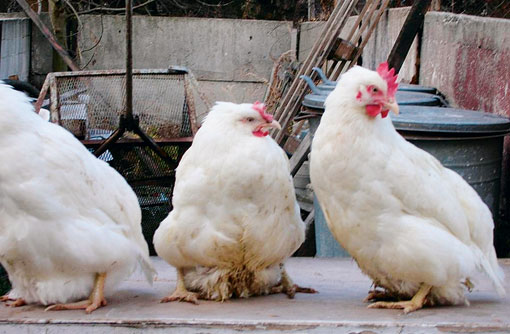Learning to tackle the QX challenge

The arrival of a variant strain of infectious bronchitis in a small backyard flock in the south-east of England in 2007 marked the start of a new challenge to the health of the UK poultry population.
The infection was diagnosed as being caused by a strain of the European IBV QX genotype, which was also found in a further five backyard and rare-breed flocks in other parts of England during the next two years.
Since then, QX has been isolated from an increasing number of commercial layer and broiler flocks, leading to inferior performance and increased mortality.
The virus was first reported in China in 1998 and spread gradually across Asia and Europe. “It somehow travelled to Europe in the early 2000s, first in Russia and in Western Europe by 2004,” recalls Richard Jones of Liverpool University’s school of veterinary science.
“Interestingly, this is a similar period – six to eight years – to that taken by the HP avian influenza H5N1 to reach Europe from south-east Asia, but as far as we know, unlike H5N1, without the mediation of migratory waterfowl.”
In Europe, QX infection is associated with a range of problems, particularly kidney damage in young chickens and the phenomenon of ‘false’ or ‘silent’ layers, where the oviduct does not develop normally, resulting in massive fluid-filled cysts and no egg production in affected birds at sexual maturity.
“The phenomenon of false layers is not new, but has not been observed for many years,” says Prof Jones. “We know that it could be induced experimentally by a Massachusetts-type IBV in neonatal female chicks with no maternal antibodies. My colleague Dr Kannan Ganapathy recently showed that QX can cause cystic development of the oviduct after day-old infection, too.”
Devastating losses of young birds from QX infection due to nephritis have occurred in Germany and Holland. Problems seen in other European countries include respiratory disease, wet litter and proventriculitis.
Such severe losses have not been seen in the UK, but the impact on flock performance is causing increasing concern in both the layer and broiler sectors.
A recent serology survey of broiler farms in the south-west, covering 169 farms representing more than 90% of the units in the region, found the QX strain on 7% of farms. They were in areas where QX virus had already been diagnosed in layer units. It also found the IB 793B strain on 20% of farms – higher than expected, but not associated with any clear clinical signs.
Mike Clark, partner in the Minster Veterinary Practice and chairman of the NFU poultry health committee, came across QX when he investigated finding up to one litre of fluid in the oviduct of infected layers and greatly enlarged kidneys in broilers.
With no specific IBV QX vaccine licensed in the UK, he used a combination of existing vaccines, including M41, 4-91 and D274. “We found some benefits from this cross-protection, but basically we were still seeing the same problem.”
Mr Clark was aware of a new specific QX vaccine developed by Pfizer and available in France, so he applied to the Veterinary Medicines Directorate for a Special Import Certificate for particular flocks.
As the vaccine is based on a live attenuated virus, it is applied as a spray when the broilers are 10-days old, rather than at the hatchery. He used the QX vaccine on units where a previous flock had been definitively diagnosed with this strain.
“We have seen some very good responses, but it is not a total panacea,” says Mr Clark. “The IB virus replicates quickly, and there needs to be surveillance and repeated testing to be sure which strains are causing the problem, together with good terminal disinfection.”
For broiler flocks not performing up to standard, his recommendation is to carry out post-mortems on eight birds/house at 20-24 days of age, using PCR testing of swabs from the windpipe or kidneys to check for the presence of QX and other variant strains.
Daniel Parker, partner in Slate Hall Veterinary Practice, says that screening of flocks with reduced growth rate in eastern England using PCR analysis had shown the presence of the IBV QX virus in around 20% of cases.
The flocks were generally given multi-vitamins, then the emphasis turned to protecting the subsequent flock, often with the cross-protection provided by a combination of the D274, 4-91 and 88 strains of vaccine. “We’ve certainly seen a good level of improved performance where we’ve used these.”
Once a new IB strain was in a country it could soon spread by a variety of routes, through direct contact, biosecurity breaches and some wind transfer in local areas.
